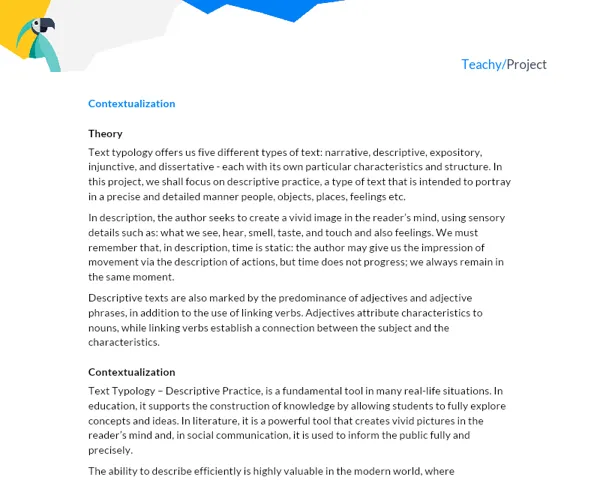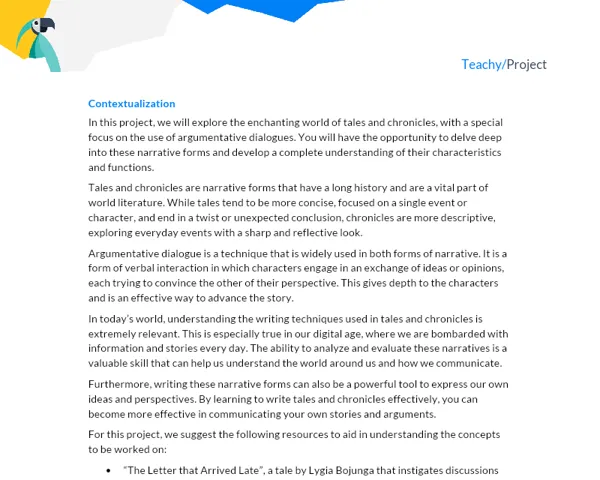Contextualization
The Portuguese language is one of the most complex and beautiful in the world, characterized by a rich variety of sounds and forms. The main aspects that contribute to this complexity are vowel combinations, consonant combinations, digraphs, syllable division, and accentuation. When well understood, these elements allow speakers to have a richer and more precise expression, as well as enabling the interpretation and production of texts more effectively.
To contextualize, vowel combinations are the combinations of vowels and/or semivowels in the same syllable or in different syllables. Consonant combinations, on the other hand, are the junction of two consonants in different syllables. Digraphs, in turn, correspond to the combination of two letters to represent a single sound. Syllable division, as the name suggests, deals with the correct separation of syllables in words. And accentuation, finally, is a crucial aspect that can completely alter the meaning of a word.
In practical terms, these grammatical rules are fundamental for the understanding and production of text. For example, correct accentuation is crucial for the proper interpretation of texts, as it influences the intonation and meaning of words. Adequate syllable division, in turn, is essential for reading texts aloud, as it allows for the correct pronunciation of words. And vowel combinations, consonant combinations, and digraphs allow us to understand how words are formed and how they should be read.
As speakers of the Portuguese language, it is essential that we have a solid understanding of these rules so that we can communicate effectively and precisely. Furthermore, this understanding allows us to appreciate the richness and beauty of our language, as well as providing us with valuable skills for reading, writing, and public speaking.
To deepen your knowledge, I recommend the following resources:
- "Grammar of the Portuguese Language" by Pasquale Cipro Neto and Ulisses Infante, an excellent source of study for the grammatical aspects of the Portuguese language.
- "New Minigrammar of Contemporary Portuguese" by Domingos Paschoal Cegalla, a contemporary and comprehensive work that addresses the rules of the Portuguese language clearly and objectively.
- "Portuguese Language Portal", an online resource that offers a wide variety of learning materials and references on the Portuguese language.
Practical Activity
Activity Title: "The Mastery of Words: A Journey through Portuguese Phonetics"
Project Objective
This project aims to deepen students' understanding of vowel combinations, consonant combinations, digraphs, syllable division, and accentuation through the creation of an interactive and informative "Portuguese Phonetics Guide".
Detailed Project Description
Students, divided into groups of 3 to 5 members, should create an interactive digital Portuguese Phonetics Guide. This guide should deeply and comprehensively address the topics of vowel combinations, consonant combinations, digraphs, syllable division, and accentuation. The project should combine the disciplines of Portuguese and Informatics, where students will apply their content production and digital development skills.
The developed guide should:
- Explain each topic clearly and comprehensively, including illustrative examples.
- Include interactive activities to test the user's understanding of each topic. These activities can be quizzes, games, multiple-choice exercises, etc.
- Be aesthetically pleasing and easy to navigate.
- Be built using appropriate digital tools, such as graphic design software, programming, among others.
Required Materials
- Computers with internet access.
- Graphic Design Software (e.g., Adobe Photoshop, Illustrator) or presentation tools (e.g., PowerPoint, Google Slides) for creating the interactive guide.
- Research materials: books, articles, specialized websites on Portuguese language grammar.
Detailed Step-by-Step
- Divide the class into groups of 3 to 5 students.
- Instruct the groups to research deeply on each of the topics, using the suggested bibliography and other research materials.
- Each group should draft an outline of the guide, indicating how the topics will be addressed and the interactive activities that will be included.
- After the review and approval of the outline by the teacher, students should start creating the interactive guide using the appropriate digital tools.
- The groups should present their interactive guides to the class, demonstrating their functionalities and explaining their design choices.
- Finally, each group should prepare a written report detailing the guide production process, the concepts involved, and the results obtained.
Project Deliverables and Connection with Activities
The project will have two main deliverables: the interactive "Portuguese Phonetics Guide" and a detailed written report. Both must be delivered in digital format.
The report should be written following the structure of: Introduction, Development, Conclusions, and Bibliography. In the introduction, students should explain the relevance of the concepts addressed, the purpose of the project, and its practical application. In the development, students should detail each stage of the guide production, explaining the creative process, the tools used, the challenges encountered and how they were solved, as well as discussing the results obtained. In the conclusion, students should reflect on what they learned during the project, what skills they developed, and how they can apply this knowledge in the future. The bibliography should list all sources used in the research.
The "Portuguese Phonetics Guide" should be interactive, informative, and aesthetically pleasing. It should provide an enjoyable educational experience for the user, allowing them to understand the concepts clearly and apply the acquired knowledge through interactive activities.
Students will be evaluated based on the quality, creativity, and interactivity of the produced guide, the content and organization of the written report, collaboration and teamwork, as well as the correct application of knowledge about the grammar topics addressed.



